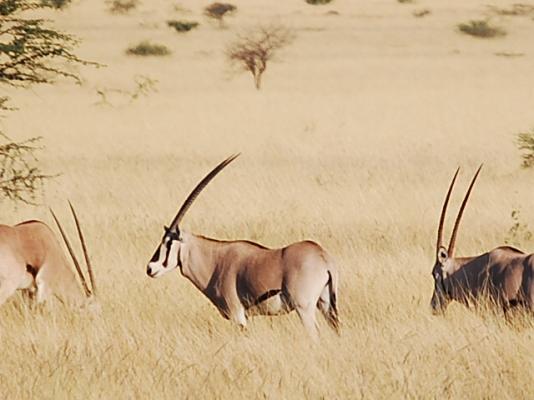
Awash National Park is one of Ethiopia's oldest and most accessible national parks, located in the Afar Region, around 225 kilometers east of the capital city, Addis Ababa. Established in 1966, it covers an area of approximately 756 square kilometers.
Key Features:
Awash River: The park is named after the Awash River, which flows through it. The river, with its impressive waterfalls, is a prominent feature, providing a lush, green ribbon of life through the otherwise arid landscape.
Wildlife: Awash National Park is home to diverse wildlife, including over 80 mammal species and around 450 bird species. Common sightings include Beisa oryx, Soemmering’s gazelle, lesser kudu, dik-dik, warthogs, and various cats like caracals and servals. It’s also home to the Hamadryas and Anubis baboons and the rare Ethiopian wolf.
Bird Watching: The park is a bird watcher’s paradise, with notable species such as the Abyssinian hornbill, orange-bellied parrot, and the endemic blue-winged goose.
Landscape: The park's landscape is diverse, featuring acacia woodlands, savannah grasslands, volcanic hot springs, and lava fields.
Mount Fentale: The dormant volcano, Mount Fentale, adds a dramatic backdrop to the park. Its peak, reaching an altitude of about 2,007 meters, offers a challenging hike with rewarding panoramic views.
Hot Springs: Numerous hot springs are situated within the park, including the Filwoha Hot Springs, which is encircled by palm trees and offers a unique place to relax and enjoy nature.
Access and Accommodation: The park is relatively easy to reach from Addis Ababa, making it a convenient destination. There are basic camping facilities available, as well as a few lodges nearby for more comfortable accommodation.
Conservation Challenges:
Like many national parks in developing countries, Awash faces several conservation challenges, including:
Human-Wildlife Conflict: Encroachment by local communities for grazing and agriculture can lead to conflicts.
Poaching: Illegal hunting poses a threat to the wildlife.
Environmental Degradation: Overgrazing and deforestation by local pastoralists can lead to soil erosion and habitat loss.
Importance for Tourism:
Awash National Park plays a crucial role in Ethiopia’s tourism industry, attracting nature lovers, bird watchers, and adventure seekers. The revenue generated through tourism also supports local communities and conservation efforts.
Visiting Tips:
Best Time to Visit: The best time to visit is during the dry season, from October to March when wildlife is more visible, and the weather is favorable.
Guided Tours: Hiring a local guide can enhance the experience, providing valuable insights into the flora, fauna, and local culture.
Prepare for Heat: Given the arid climate, visitors should be prepared for hot temperatures, especially during midday.
In summary, Awash National Park represents a unique blend of Ethiopia’s natural beauty and biodiversity, making it a significant destination for both conservation and tourism.
